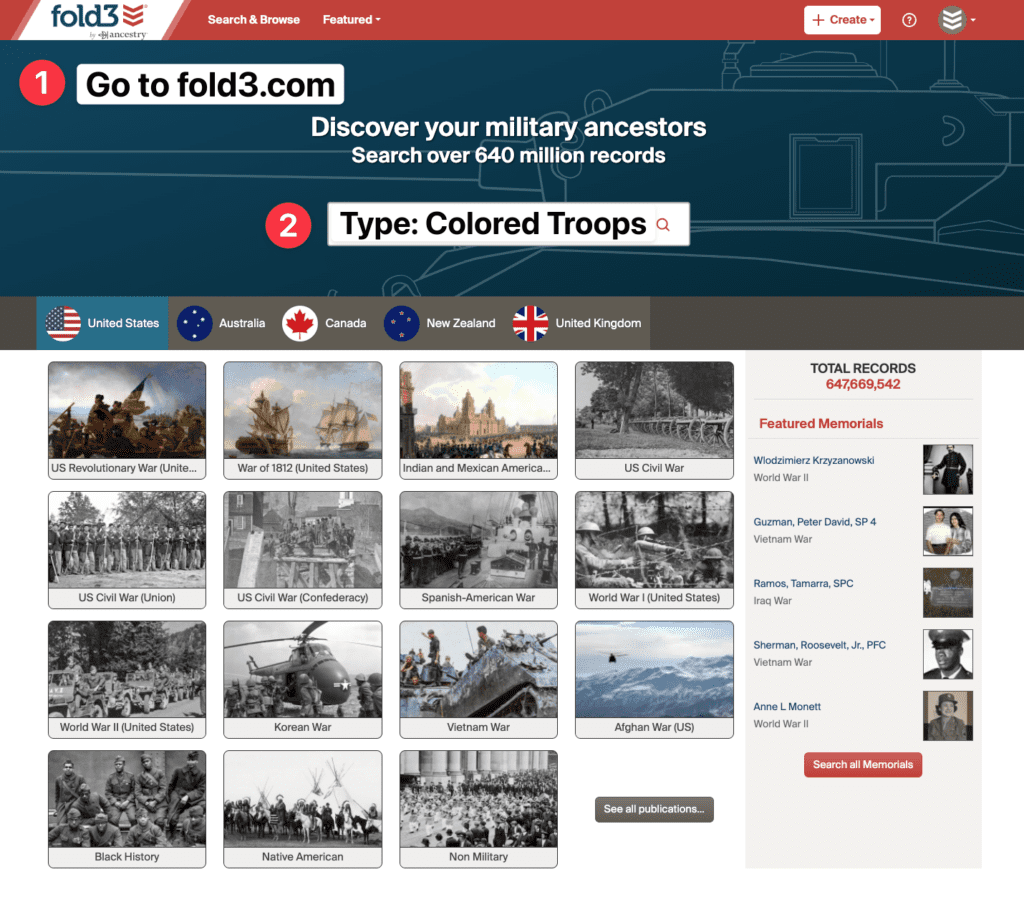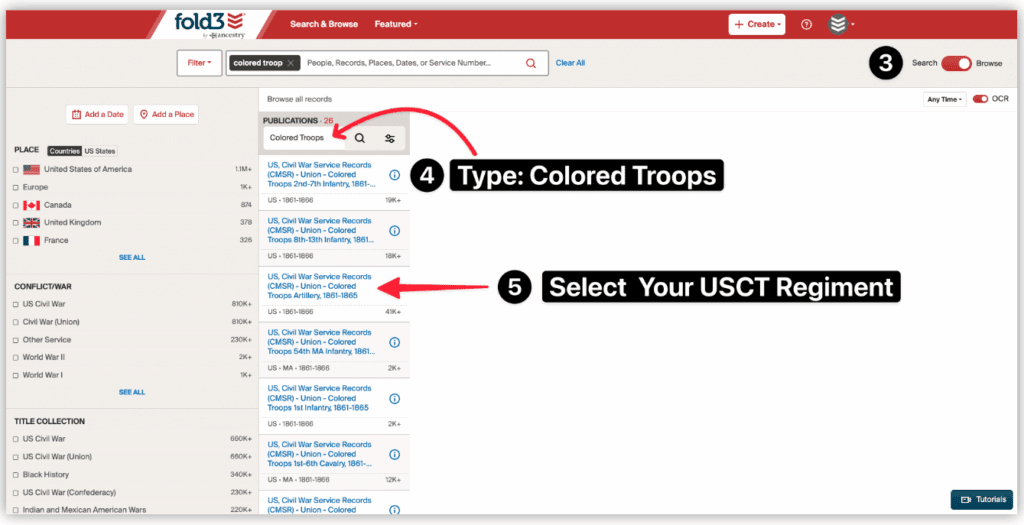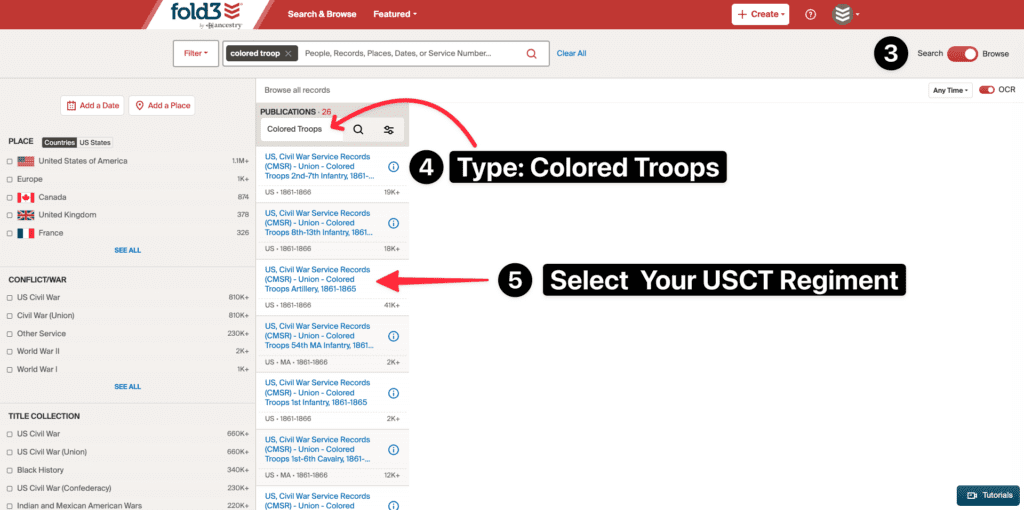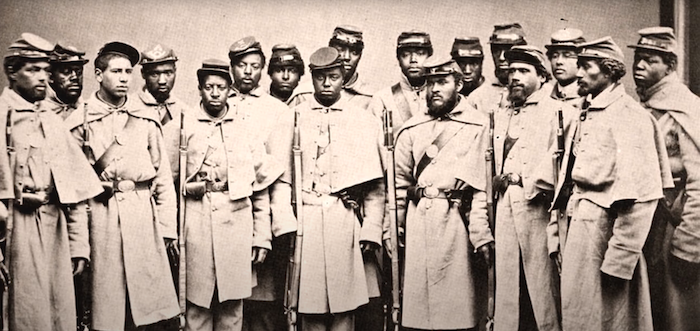
United States Colored Troops (USCT)
Once let the black man get upon his person the brass letters U.S.; let him get an eagle on his button, and a musket on his shoulder and bullets in his pocket, and there is no power on earth which can deny that he has earned the right of citizenship. — Frederick Douglass, 1863
How many enlisted, and from where?
![]() Note: USCT enlistments by place of enrollment (soldiers were credited to the state/ area where they mustered many were born elsewhere). These totals reflect enlistment location, not birthplace. Agents from Northern states recruited heavily in the occupied South; many men credited to border states had been enslaved there. To view the total, select the Abbreviation.
Note: USCT enlistments by place of enrollment (soldiers were credited to the state/ area where they mustered many were born elsewhere). These totals reflect enlistment location, not birthplace. Agents from Northern states recruited heavily in the occupied South; many men credited to border states had been enslaved there. To view the total, select the Abbreviation.
- ➡️ Age: Typically 18–45 for soldiers (draft roll 20–45); musicians could be younger by regulation.
- ➡️ Status: Men formerly enslaved in rebel areas could enlist after Jan. 1, 1863; in the border states policy evolved to freedom upon enlistment; and freedom‑seekers ("contrabands") increasingly joined as soldiers as policy shifted in 1862–1863
- ➡️ Draft vs. volunteer: Most USCT volunteered; the federal draft applied as well.
Most USCT regiments were infantry; a smaller number were cavalry and artillery. Officers were mostly white, with a limited but growing number of Black surgeons, chaplains, and a few commissioned line officers by 1865. Training and mustering were standardized under the Bureau of Colored Troops.
- Subtotal (North/Border): 79,283 | (South): 93,796
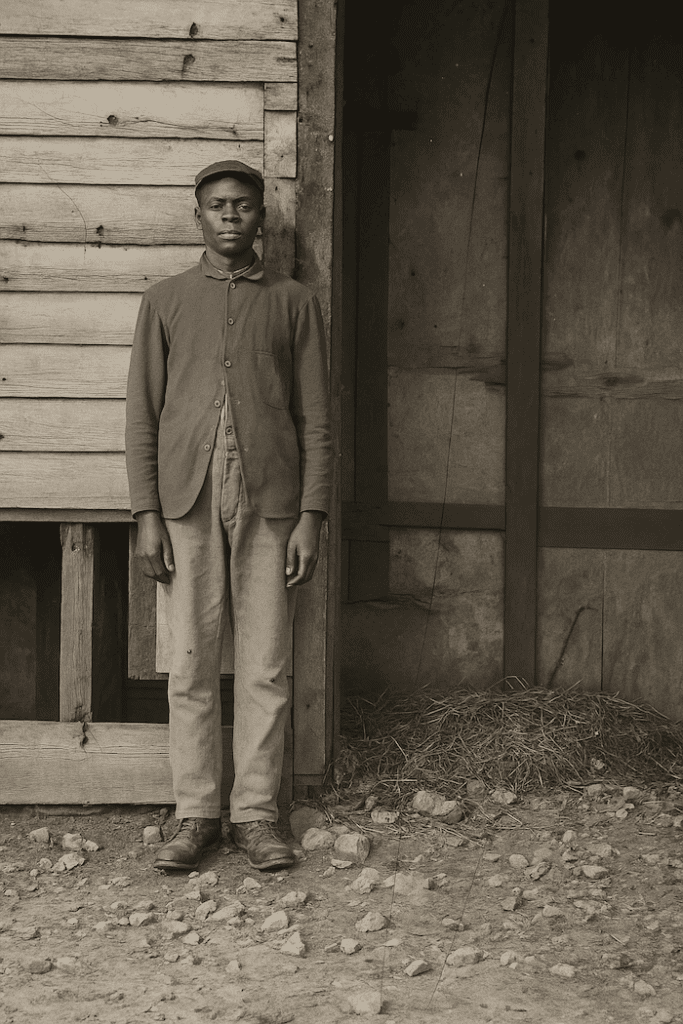
USCT Research Records
![]() “While the U.S. Colored Troops (USCT) played a pivotal role during the Civil War, their service records and post-war claims did not end with the Bureau’s closure in 1872. Many unresolved pensions, back pay requests, and family petitions were carried forward into the Freedmen’s Bureau Records M2029 (1872–1878). This collection, known as the ‘afterlife’ of the Bureau, preserves thousands of military claims and related documents tied directly to USCT veterans and their families. To explore these records and their genealogical value, visit our Freedmen’s Bureau Records M2029 page.“
“While the U.S. Colored Troops (USCT) played a pivotal role during the Civil War, their service records and post-war claims did not end with the Bureau’s closure in 1872. Many unresolved pensions, back pay requests, and family petitions were carried forward into the Freedmen’s Bureau Records M2029 (1872–1878). This collection, known as the ‘afterlife’ of the Bureau, preserves thousands of military claims and related documents tied directly to USCT veterans and their families. To explore these records and their genealogical value, visit our Freedmen’s Bureau Records M2029 page.“
Abbreviations you’ll see: A.D. (African Descent); C.d’A. (Corps d’Afrique); col’d (also col., cold.) = Colored; USCT (U.S. Colored Troops); USCI (U.S. Colored Infantry); USCC (U.S. Colored Cavalry); USCLA/USCHA (U.S. Colored Light/Heavy Artillery); and POC (modern shorthand for “Person of Color”).
How to locate USCT Units on fold3
Step 1 - Click images to enlarge:
![]() Start at Fold3 homepage. In the main search bar, type Colored Troops to surface USCT collections quickly. This broad query brings up compiled service records and related sets tied to the U.S. Colored Troops. You can refine later by regiment, company, or surname once you switch from Search to Browse.
Start at Fold3 homepage. In the main search bar, type Colored Troops to surface USCT collections quickly. This broad query brings up compiled service records and related sets tied to the U.S. Colored Troops. You can refine later by regiment, company, or surname once you switch from Search to Browse.
Step 2
![]() After searching, flip the toggle from Search to Browse. Browse mode lets you drill into specific Publications (record sets) instead of keyword hits. For USCT work you’ll want the U.S. Civil War Service Records (CMSR) — Union — Colored Troops publications, where you can then choose regiment, company, and surname ranges.
After searching, flip the toggle from Search to Browse. Browse mode lets you drill into specific Publications (record sets) instead of keyword hits. For USCT work you’ll want the U.S. Civil War Service Records (CMSR) — Union — Colored Troops publications, where you can then choose regiment, company, and surname ranges.
Step 3
![]() In Browse, type Colored Troops in the Publications search to filter to the USCT compiled service record sets. Select the correct CMSR publication, then click through to your regiment → company → surname range to open the soldier’s jacket. If your ancestor served in artillery or cavalry, pick the corresponding USCT Artillery or USCT Cavalry publication.
In Browse, type Colored Troops in the Publications search to filter to the USCT compiled service record sets. Select the correct CMSR publication, then click through to your regiment → company → surname range to open the soldier’s jacket. If your ancestor served in artillery or cavalry, pick the corresponding USCT Artillery or USCT Cavalry publication.
Origins & law: how enlistment became possible
Below is a concise, linked table (no raw URLs) you can drop into a sidebar or keep inline.
| Item | What it did | Primary source(s) |
|---|---|---|
| Confiscation & Militia Acts (July 17, 1862) | Authorized employing men of African descent in the Union war effort; freed enslaved people of disloyal owners | Militia Act text (Library of Congress) |
| Emancipation Proclamation (Jan 1, 1863) | Declared that suitable persons among the emancipated would be received into the armed service | National Archives edition |
| General Orders No. 143 (May 22, 1863) | Created the Bureau of Colored Troops; standardized USCT recruiting, training, command | DocsTeach/National Archives |
| Equal Pay Law (June 15, 1864) | Equalized pay for Black soldiers; retroactive provisions implemented thereafter | Freedmen & Southern Society · National Archives overview |
| Owner compensation in loyal states (GO 329, Oct 3, 1863) | Enabled enlistment of enslaved men in MD, MO, TN, KY with compensation (up to $300) to loyal owners | FamilySearch |
| Enrollment (Conscription) Act (Mar 3, 1863) | Set national draft framework (draft rolls 20–45; voluntary enlistment generally 18+; musicians younger by regulation) | Statutes at Large (govinfo) |
| USCT in Battle | ||||
| Date | Battle/Operation | What USCT did | ||
| Oct 28–29, 1862 | Island Mound, MO | 1st Kansas Colored Volunteers (pre‑USCT) defeat Confederate guerrillas—first combat for Black Union troops. | ||
| May–July 1863 | Port Hudson, LA | Corps d’Afrique (later USCT) assault and siege—among the first large‑scale actions of Black troops. | ||
| Jun 7, 1863 | Milliken’s Bend, LA | Newly raised Louisiana regiments hold against veteran Texans in fierce hand‑to‑hand fighting, aided by Union gunboats. | ||
| Jul 18, 1863 | Fort Wagner, SC | 54th Massachusetts (state regiment) leads a celebrated but costly assault; Sgt. William H. Carney later awarded the Medal of Honor. | ||
| Jul 30, 1864 | The Crater, Petersburg, VA | USCT divisions spearhead a renewed attack through the breach; suffer heavy losses amid chaos. | ||
| Sep 29–30, 1864 | New Market Heights/Chaffin’s Farm, VA | USCT storm strong Confederate works north of the James—14 Medals of Honor to Black soldiers for this action. | ||
| Dec 15–16, 1864 | Nashville, TN | USCT (≈13,000) help break Hood’s army; praised for discipline and effectiveness. | ||
| Apr 1865 | Richmond & Appomattox, VA | USCT among the first into Richmond; regiments such as the 41st USCT present at Appomattox and on occupation duty. | ||

